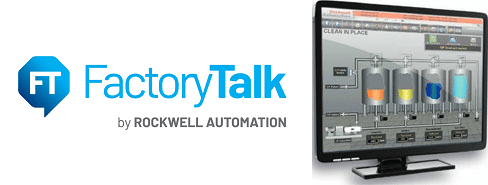1. EXECUTIVE SUMMARY
- CVSS v3 9.0
- ATTENTION: Exploitable remotely/low skill level to exploit
- Vendor: Rockwell Automation
- Equipment: FactoryTalk View SE
- Vulnerabilities: Improper Input Validation, Improper Restriction of Operations Within The Bounds of a Memory Buffer, Permissions, Privileges, and Access Controls, Exposure of Sensitive Information to an Unauthorized Actor
2. RISK EVALUATION
Successful exploitation of these vulnerabilities may allow a remote authenticated attacker to manipulate data of affected devices.
3. TECHNICAL DETAILS
3.1 AFFECTED PRODUCTS
All versions of FactoryTalk View SE are affected.
3.2 VULNERABILITY OVERVIEW
3.2.1 IMPROPER INPUT VALIDATION CWE-20
The affected product does not properly validate input of filenames within a project directory. A remote, unauthenticated attacker may be able to execute a crafted file on a remote endpoint that may result in remote code execution (RCE).
CVE-2020-12029 has been assigned to this vulnerability. A CVSS v3 base score of 9.0 has been assigned; the CVSS vector string is (AV:L/AC:L/PR:N/UI:N/S:C/C:H/I:H/A:N).
3.2.2 IMPROPER RESTRICTION OF OPERATIONS WITHIN THE BOUNDS OF A MEMORY BUFFER CWE-119
After bypassing memory corruption mechanisms found in the operating system, a local, authenticated attacker may corrupt the associated memory space allowing for arbitrary code execution.
CVE-2020-12031 has been assigned to this vulnerability. A CVSS v3 base score of 7.5 has been assigned; the CVSS vector string is (AV:L/AC:H/PR:L/UI:R/S:C/C:H/I:H/A:H).
3.2.3 PERMISSIONS, PRIVILEGES, AND ACCESS CONTROLS CWE-264
A remote, authenticated attacker may be able to utilize certain handlers to interact with the data on the remote endpoint since those handlers do not enforce appropriate permissions.
CVE-2020-12028 has been assigned to this vulnerability. A CVSS v3 base score of 7.3 has been assigned; the CVSS vector string is (AV:N/AC:L/PR:L/UI:R/S:U/C:H/I:H/A:N).
3.2.4 EXPOSURE OF SENSITIVE INFORMATION TO AN UNAUTHORIZED ACTOR CWE-200
The affected product discloses the hostnames and file paths for certain files within the system. A remote, authenticated attacker may be able to leverage this information for reconnaissance efforts.
CVE-2020-12027 has been assigned to this vulnerability. A CVSS v3 base score of 4.3 has been assigned; the CVSS vector string is (AV:N/AC:L/PR:L/UI:N/S:U/C:L/I:N/A:N).
3.3 BACKGROUND
- CRITICAL INFRASTRUCTURE SECTORS: Chemical, Commercial Facilities, Critical Manufacturing, Energy, Government Facilities, Water and Wastewater Systems
- COUNTRIES/AREAS DEPLOYED: Worldwide
- COMPANY HEADQUARTERS LOCATION: United States
3.4 RESEARCHER
Rockwell Automation working with Trend Micro’s Zero Day Initiative reported these vulnerabilities to CISA.
4. MITIGATIONS
Rockwell Automation has released new versions of the affected products to mitigate the reported vulnerabilities. Affected users who are not able to apply the latest update are encouraged to seek additional mitigations or workarounds from the vendor’s published guidelines in their security advisory.
For CVE-2020-12029 Rockwell Automation recommends applying patch 1126289. Before installing this patch, the patch rollup dated 06 Apr 2020 or later MUST be applied. 1066644 – Patch Roll-up for CPR9 SRx.
For CVE-2020-12031 Rockwell Automation recommends applying patch 1126290. Before installing this patch, the patch rollup dated 06 Apr 2020 or later MUST be applied. 1066644 – Patch Roll-up for CPR9 SRx.
For CVE-2020-12028 and CVE-2020-12027 Rockwell Automation recommends enabling built in security features found within FactoryTalk View SE. Users should follow guidance found in knowledge base articles 109056 and 1126943 to set up IPSec and/or HTTPs.
CISA reminds organizations to perform proper impact analysis and risk assessment prior to deploying defensive measures.
CISA also provides a section for control systems security recommended practices on the ICS webpage on us-cert.gov. Several recommended practices are available for reading and download, including Improving Industrial Control Systems Cybersecurity with Defense-in-Depth Strategies.
Additional mitigation guidance and recommended practices are publicly available on the ICS webpage on us-cert.gov in the Technical Information Paper, ICS-TIP-12-146-01B–Targeted Cyber Intrusion Detection and Mitigation Strategies.
Organizations observing any suspected malicious activity should follow their established internal procedures and report their findings to CISA for tracking and correlation against other incidents.
CISA also recommends users take the following measures to protect themselves from social engineering attacks:
- Do not click web links or open unsolicited attachments in email messages.
- Refer to Recognizing and Avoiding Email Scams for more information on avoiding email scams.
- Refer to Avoiding Social Engineering and Phishing Attacks for more information on social engineering attacks.
No known public exploits specifically target these vulnerabilities.
Source:


Stay connected